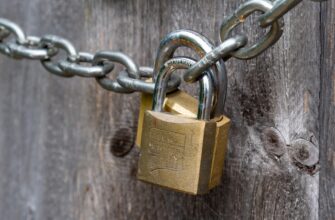### Introduction
In today’s digital age, securing your cryptocurrency isn’t just about protection from hackers—it’s about reclaiming your financial privacy. Encrypting your Ledger hardware wallet anonymously adds a critical layer of security by dissociating your identity from your crypto assets. This guide walks you through practical steps to set up and maintain a truly anonymous Ledger, shielding you from surveillance, targeted attacks, and unwanted scrutiny. Whether you’re a privacy advocate or simply value discretion, these methods ensure your holdings remain yours alone.
### Why Anonymize Your Ledger Encryption?
Linking your identity to a Ledger wallet exposes you to multiple risks:
– **Government tracking**: Regulatory bodies may monitor large transactions.
– **Hacker targeting**: Personal data leaks make you vulnerable to phishing or physical theft.
– **Financial profiling**: Exchanges and third parties can build detailed spending histories.
Anonymous encryption mitigates these threats by ensuring no one connects you to your wallet—even if your device is compromised.
### How Ledger Encryption Works (The Basics)
Ledger devices use military-grade security protocols:
1. **Secure Element Chip**: A tamper-resistant component storing private keys offline.
2. **PIN Protection**: Encrypts access to the device (8-digit minimum).
3. **Recovery Phrase**: A 24-word master key that regenerates your wallet.
Anonymity hinges on ensuring none of these elements trace back to you.
### Step-by-Step: Encrypting Your Ledger Anonymously
Follow this precise sequence to eliminate identity links:
#### Step 1: Purchase Anonymously
– **Avoid KYC Platforms**: Buy from local retailers using cash, or use non-KYC marketplaces like eBay (with seller discretion).
– **Cryptocurrency Payment**: Use privacy coins (Monero, Zcash) via decentralized platforms.
– **Delivery**: Opt for a PO box or locker—never your home address.
#### Step 2: Isolate Your Setup Environment
– **Use a Clean OS**: Boot a temporary OS via USB (e.g., Tails OS) to prevent malware.
– **Verify Software**: Download Ledger Live only from ledger.com, and check SHA-256 checksums.
– **Network Security**: Connect through Tor or a no-logs VPN (e.g., Mullvad).
#### Step 3: Generate & Secure Your Recovery Phrase
– **Initialize as New Device**: Select this option during setup—never import existing seeds.
– **Write, Don’t Digitize**: Record the 24 words on fireproof paper. Store in multiple hidden locations.
– **Enable Passphrase**: Activate the “25th word” feature for a hidden wallet (e.g., “mypass123”). This creates a decoy account without it.
#### Step 4: Maintain Transaction Anonymity
– **Fund via Privacy Coins**: Convert assets to Monero/XMR before sending to your Ledger.
– **Use Decentralized Mixers**: For Ethereum, leverage Tornado Cash; for Bitcoin, try CoinJoin.
– **Avoid KYC Exchanges**: Deposit funds via peer-to-peer (P2P) platforms like Bisq.
### Advanced Anonymity Tactics
– **Dedicated Devices**: Use a burner phone for Ledger Live 2FA—no SIM, Wi-Fi only.
– **Stealth Addresses**: For ERC-20 tokens, utilize tools like Umbra for one-time deposit addresses.
– **Firmware Updates**: Always update via VPN, and validate files with GPG signatures.
### Risks and Limitations
– **Physical Seizure**: Authorities can compel PIN disclosure in some jurisdictions.
– **Mixer Legality**: Services like Tornado Cash face restrictions in the US/EU.
– **Seed Loss**: If your recovery phrase is lost/stolen, funds are irrecoverable.
### Frequently Asked Questions (FAQ)
**Q1: Is anonymous Ledger encryption legal?**
A: Yes, but regulations vary. Using mixers or privacy coins may draw scrutiny. Consult local laws before proceeding.
**Q2: Can I anonymize an existing Ledger wallet?**
A: No. Reset the device (“Wipe” in settings), generate a new seed anonymously, and transfer funds via privacy tools.
**Q3: Does a VPN guarantee anonymity?**
A: Not alone. Combine it with Tor, clean devices, and cash purchases for maximum effect.
**Q4: What if I forget my passphrase?**
A: Funds in the hidden wallet are lost forever. Store passphrases as securely as your recovery phrase.
**Q5: How often should I rotate wallets?**
A: Every 1-2 years, or after large transactions, to disrupt blockchain analysis.
### Final Thoughts
Encrypting your Ledger anonymously transforms it from a vault into a ghost—untraceable and resilient. By meticulously obscuring purchase trails, hardening setups, and leveraging privacy tech, you create a financial fortress. Remember: In crypto, anonymity isn’t paranoia—it’s prudence. Start fresh today, and never let your wealth become a liability.








